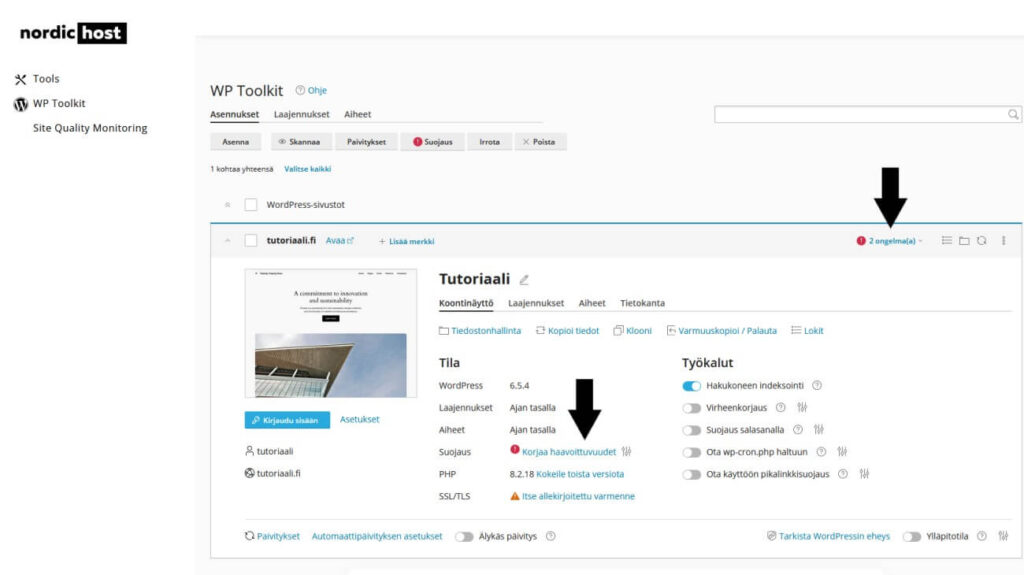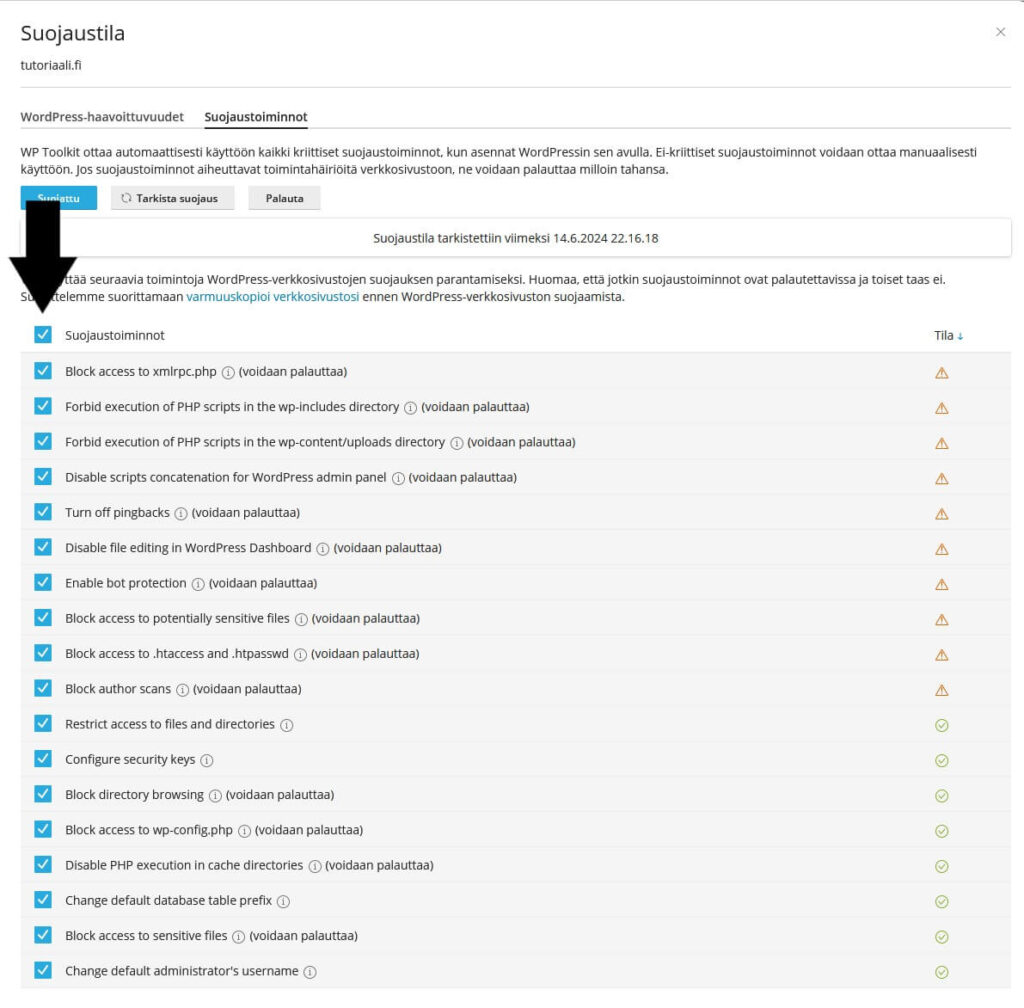WordPress is the world's most popular website platform, but its popularity also makes it an attractive target for hackers. Improving security is crucial to protect your site and its users. We cover best practices and measures to help you maximise the security of your WordPress site.
1. Improve the security of your WordPress site by implementing the most common security measures
You can maximise the security of your WordPress site by starting with the WP Toolkit. This tool will alert you to any security vulnerabilities detected and prompt you to fix them. Go to the WP Toolkit section by clicking on WP Toolkit on the left. You will then see a list of installed WordPress pages. If you have not yet installed WordPress, read more about installing and deploying WordPress by clicking here.
In the picture, the text marked with an arrow "Fix vulnerabilities" allows you to proceed to fix vulnerabilities and improve the security of the page.

2. Fix vulnerabilities
Click on the box where the arrow in the picture points. This makes it quick and easy to turn on all the security features.

3. Keep your WordPress site up to date
You should take care of the updates of your WordPress site's plugins and theme. Old plugins and themes may contain security holes that can be exploited by outsiders. In particular, popular add-ons such as Elementor, are repeatedly targeted by various attacks and it is always worth updating them. Updates bring fixes for potential vulnerabilities.
We can take care of your site's updates and security if you choose NordicHost's maintenance package. You then pass the responsibility to us, and you no longer have to worry about the security of your WordPress site yourself.
4. Install WordFence and the Limit Login Attempts add-on
A common practice of hackers is to try different passwords with bruteforce attacks. By limiting the number of failed login attempts, you can reduce the risk of this type of attack. To do this, you can use an add-on such as Limit Login Attempts Reloaded.
WordFence again provides a comprehensive security solution for your website in general. It includes features such as:
- Firewall: protects the site from malicious traffic and blocks known threats.
- Malware scan: scans your site's files, themes and plugins for malware and suspicious activity.
- Login security: provides two-factor authentication (2FA).
- Live Traffic Monitoring: shows real-time traffic and possible attacks.
- IP address blocking: prevents malicious IP addresses from entering the site.
However, installing WordFence is not mandatory, as all NordicHost webhosts already include antivirus and scanning for free. However, if you want to monitor your website traffic and possible attacks through the WordPress interface, you can do so by installing WordFence.
5. Use a strong password and SSL certificate
A computer-generated, long password is the most effective method of blocking login attempts from various attackers. You can generate an effective password by using methods such as LastPass Password Generator website.
It is also worth changing the user name of the root user from the more common "Admin" to something else that is difficult to guess.
Improving security on your WordPress site requires a combination of several different measures. By updating regularly, using strong passwords and two-factor authentication, backing up your site, and using security plug-ins and SSL certificates, you can significantly improve your site's protection against hackers and other threats. By following these best practices, you can keep your WordPress site safe and secure.


